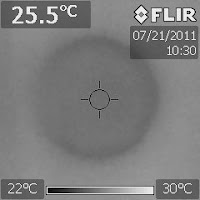For a long time, some of my colleagues joked about my work on the Molecular Workbench as some trick to randomize "bouncing balls in a box." Part of their impressions came from the overly demonstrated gas simulations that are conveniently linked to some widely taught physical science concepts.
To do justice to the Molecular Workbench, I intend to write a series of blog posts that show the unknown facts about what it is capable of doing. This series is not to defend the work I have done. It is more about digging the potential of computational science and see what favor it can do for science education.
My plain answer to my colleagues' comment is that: "It is something in a box, but not just bouncing balls." One of the things it does more than bouncing balls is its capacity in soft body dynamics.
Soft body dynamics is a subject that focuses on visually realistic physical simulations of the motion of soft bodies (or deformable objects). Why is "soft body" important? The answer is that most biological systems are soft--at the macroscopic level or at the microscopic level. Without the biomechanical flexibility of human body, we would be quite different.Without the biomolecular flexibility of cells, there probably would not be life (e.g., it would not be possible for molecules to move in and out cells).
In many cases when we model microscopic interactions, we don't really need to know how every atom in the system is doing, not only because tracking every single atom in a huge biomolecule is nearly impossible but also it is not necessary to know those details for a basic understanding. Scientists often need to simplify a complex system in order to be able to focus on important aspects. The need is even more so in teaching--the cognitive load for students should be minimized in order to effectively convey the conceptual picture in a short time.
So an interesting question is how flexible biological objects can be simulated in a meaningful way. One approach is to model a soft body as a network of particles connected by elastic constraints (linear, angular, or torsional). This is often known as the mass-spring model in the computer graphics community. In the case of a 2D model, these discrete particles are placed along the edge of a 2D object. In the case of a 3D model, these particles are placed on the surface mesh of a 3D object. Physical interactions among soft bodies are then made possible by giving these particles properties such as a stiff repulsive core, an attractive force, or an electric charge. This allows many interesting phenomena to be modeled, such as self-assembly, docking, and so on.
The above animation shows a box with bouncing balls and swimming "worms," produced by the Molecular Workbench. Does the dynamics of these long soft bodies show some kind of "wormy" behavior that is clearly not that of bouncy balls?
In fact, the mass-spring model implemented in the Molecular Workbench has a number of applications in artificial life ranging from digital fish to digital cells. See this page for a nice summary.










































